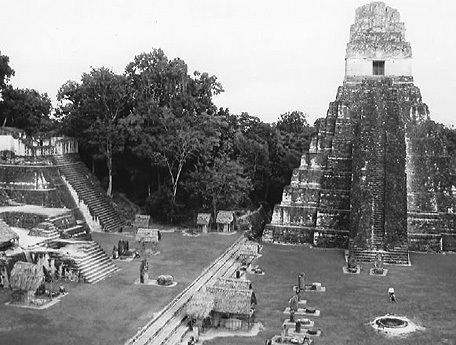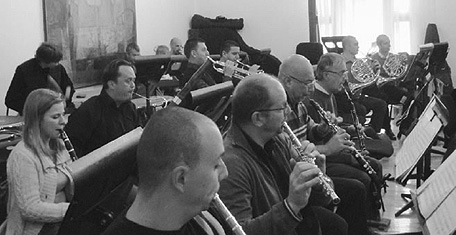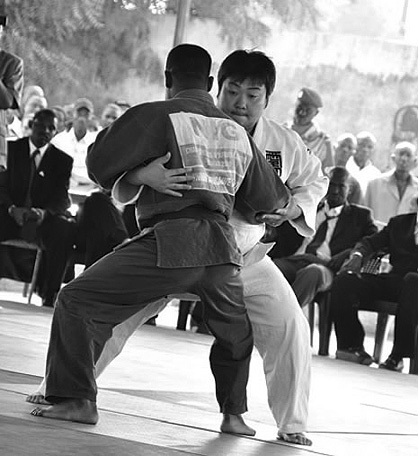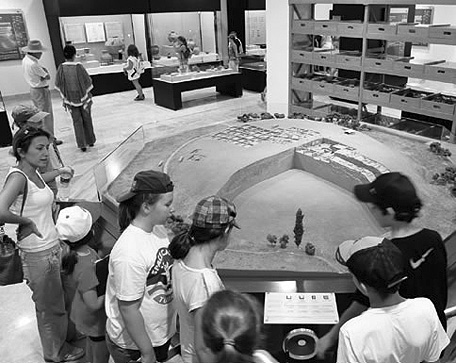Japan's Official Development Assistance White Paper 2011
(5) Cultural Preservation and Promotion
In developing countries, more people are interested in the promotion and preservation of their own cultures. For example, cultural heritages that symbolize a country are not only the source of pride for its people, but can also be used effectively as sightseeing resources to develop the society of the residents of surrounding areas. However, many of the cultural heritages of developing countries are at risk, and support to protect those cultural heritages can be viewed as cooperation that goes direct to people's hearts, and has long-term impact. In addition, the preservation of the precious cultural heritages that are shared by all humankind is an issue that not only developing countries should be dealing with, but the entire international community as well.

The Tikal ruins in Guatemala
<Japan's Efforts>
Since 1975 Japan has continued to contribute the promotion of cultural and higher educational activities and preservation of cultural heritages of developing countries with Cultural Grant Assistance*. Specifically, Japan has implemented construction of the facilities for the preservation and use of the cultural heritages and cultural properties, sports and cultural facilities, higher education and research organization facilities, and improvement of necessary equipment in the said facilities. The equipment and facilities provided to developing countries through Cultural Grant Assistance are also used as bases for providing information of Japan, and for cultural exchange, and would deepen the understanding of Japan and fostering a sense of affinity toward Japan. In recent years, from the viewpoint of "greater visibility of Japanese assistance," support for Japanese language education, traditional Japanese martial arts, and other such areas have been priority areas.
In FY2010, Japan provided assistance for the tourism and educational facilities related to natural and cultural heritages in Tanzania, Cambodia, Honduras, and Guatemala. In addition to providing the opportunity for the people of these countries to become familiar with their precious natural and cultural heritages, this assistance was intended to contribute to socio-economic development through the tourism industry.
In Bosnia-Herzegovina, Japan has supported the project for improvement of the musical instruments of the Sarajevo Philharmonic Orchestra which contributes to domestic ethnic reconciliation and peace activities through ethnic musical performances involving performers from multiple ethnic groups. In addition, Japan has provided support for language education and musical education in universities in Kyrgyzstan, where instable conditions continue due to the conflict between young people from different ethnic groups, in an effort to contribute to the "consolidation of peace." Further, Japan has provided support for the production and broadcast of television programs in Argentina, Sri Lanka, Laos, Benin, Guinea-Bissau, and Tonga, and for Japanese language education in Ethiopia, Brazil, Costa Rica, and Ukraine.
Moreover, Japan is supporting restoration and preservation of the cultural heritage, providing equipments, and conducting the necessary preliminary or general studies and surveys on heritage through "the Japanese Funds-in-Trust for the Preservation of the World Cultural Heritage" that has been established in the United Nations Educational, Scientific and Cultural Organization (UNESCO). Particular efforts are put in the capacity building of human resources in developing countries, through the dispatch of international experts, workshops, and other activities which serve to transfer technology and knowledge as well. Japan provides support not only related to so-called tangible cultural heritages, but also for intangible cultural heritages such as traditional dance, music, handicraft technology, oral traditions, through "the Japan Funds-in-Trust for the safeguarding of Intangible Cultural Heritage" which has been established in UNESCO as well. Through the Funds, Japan supports projects of the training of successors, the storage of records, and other activities.

Rehearsal in the National Theater in Bosnia-Herzegovina as part of the "Project for the Improvement of Musical Instruments of the Sarajevo Philharmonic Orchestra" (Photo: JICA)

A Japan Overseas Cooperation Volunteer teaches judo in Niger (Photo: Seico Tamai)
Terminology
*Cultural Grant Assistance
Cultural Grant Assistance provides the funding to contribute to the promotion of cultural and higher educational activities and preservation of cultural heritage in developing countries (procurement of equipment, construction of facilities, etc.). There are two types: "General Cultural Grant Assistance," which is provided to governmental organizations, and "Grant Assistance for Cultural Grassroots Projects," which is provided to NGOs and local public entities for small-scale projects.
[Turkey]
"The Project for the Construction of Kaman-Kalehoyuk Archaeological Museum"
Cultural Grant Assistance (June 2007 - April 2009)
Kaman-Kalehoyuk Archeological Museum, home to artifacts found in the Kaman-Kalehoyuk archeology site located in the crossroads of East-West-South-North cultural exchange in the central Turkey, was built through Japan's Cultural Grant Assistance. A grand opening ceremony was held in July 2010 as an event of the "Japan Year 2010 in Turkey." Since 1985, the Middle Eastern Culture Center in Japan has been engaged in excavation of the site. Over the past year, more than 40,000 people have visited the museum, and educational activities including classes on the archaeological sites and archaeology for children and local residents, and training for researchers have been held,. In addition, the Turkish government has begun making efforts for roads construction and improvement in the neighboring areas, etc., to attract tourists. The museum is expected to have socio-economic impact on the local community. Many media have covered the museum, and its effect of creating a sense of affinity toward Japan and promoting exchange between the two countries are anticipated.

Inside the museum (Photo: Japanese Institute of Anatolian Archaeology at the Middle Eastern Culture Center)
